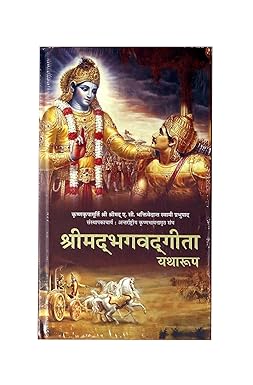ॐ नमः शिवाय ॐ नमः शिवाय
हर हर भोले नमः शिवाय |4|
रामेश्वराय शिव रामेश्वराय
हर हर भोले नमः शिवाय |4|
ॐ नमः शिवाय ॐ नमः शिवाय
हर हर भोले नमः शिवाय |4|
गंगाधराय शिव गंगाधराय
हर हर भोले नमः शिवाय |4|
ॐ नमः शिवाय ॐ नमः शिवाय
हर हर बोले नमः शिवाय |4|
जटाधराये शिव जटाधराये
हर हर भोले नमः शिवाय |4|
ॐ नमः शिवाय ॐ नमः शिवाय
हर हर बोले नमः शिवाय |4|
सोमेश्वराय शिव सोमेश्वराय
हर हर भोले नमः शिवाया |4|
ॐ नमः शिवाय ॐ नमः शिवाय
हर हर बोले नमः शिवाय |4|
विश्वेश्वराय शिव विश्वेश्वराय
हर हर भोले नमः शिवाया |4|
ॐ नमः शिवाय ॐ नमः शिवाय
हर हर बोले नमः शिवाय |4|
कोटेश्वराये शिव विश्वेश्वराय
हर हर भोले नमः शिवाया |4|
ॐ नमः शिवाय ॐ नमः शिवाय
हर हर भोले नमः शिवाय |4|
महाकालेश्वराय महाकालेश्वराय
हर हर भोले नमः शिवाया |4|
ॐ नमः शिवाय ॐ नमः शिवाय
हर हर बोले नमः शिवाय |4|
Meaning of Om Namah Shivaya
Spiritual Significance
The mantra Om Namah Shivaya is one of the most sacred chants dedicated to Lord Shiva symbolizing inner peace and divine connection.
Mantra Translation
The chant means 'I bow to Lord Shiva' acknowledging him as the supreme divine power.
Connection to Lord Shiva
This mantra represents reverence to Shiva as the destroyer of evil and the source of cosmic energy.
Symbolism of Each Word
Each word—Om Namah and Shivaya—carries deep meaning symbolizing the universe humility and Shiva respectively.
Why Devotees Chant It
Devotees chant Om Namah Shivaya to purify the mind seek blessings and experience inner transformation.
Benefits of Chanting Om Namah Shivaya
Mental Peace
Chanting this mantra calms the mind and relieves stress allowing one to feel serenity.
Spiritual Awakening
The mantra elevates spiritual consciousness and connects devotees with higher vibrations.
Positive Energy
Regular chanting fills the environment with positivity and divine energy.
Emotional Balance
It helps balance emotions and promotes inner strength during difficult times.
Devotional Bliss
Chanting with devotion brings joy and deepens the bond with Lord Shiva.
How to Chant Om Namah Shivaya
Best Time to Chant
The early morning Brahma Muhurta is considered the best time for chanting this mantra.
Using Rudraksha Mala
Devotees often use a Rudraksha mala of 108 beads to chant with full focus.
Posture and Place
Chanting in a clean peaceful place while sitting in meditation posture enhances concentration.
Daily Practice
Consistency in chanting brings long-term spiritual benefits.
Faith and Devotion
Chanting with complete faith is more important than the number of repetitions.
Om Namah Shivaya in Scriptures
Shiva Purana Reference
The Shiva Purana describes Om Namah Shivaya as the most powerful mantra of Lord Shiva.
Vedic Origin
The roots of this mantra can be traced back to the Vedic texts that glorify Lord Shiva.
Mantra in Upanishads
The Upanishads mention Om Namah Shivaya as a chant of liberation.
Role in Shaivism
This mantra is the central chant in Shaivism traditions symbolizing ultimate devotion.
Importance in Meditation
Yogis and sages use this mantra to deepen their meditation and experience divine union.
Devotional Practices with Om Namah Shivaya
Temple Recitations
Temples echo with the sound of Om Namah Shivaya during morning and evening aartis.
Group Chanting Benefits
Chanting in groups multiplies the spiritual vibrations and collective energy.
Personal Meditation
Devotees use this mantra in personal meditation for peace and self-realization.
Daily Puja
Many devotees chant Om Namah Shivaya during daily puja rituals to seek blessings.
Maha Shivratri Chanting
On Maha Shivratri continuous chanting of Om Namah Shivaya is performed worldwide.
The mantra Om Namah Shivaya is one of the most sacred chants dedicated to Lord Shiva symbolizing inner peace and divine connection.
The chant means 'I bow to Lord Shiva' acknowledging him as the supreme divine power.
This mantra represents reverence to Shiva as the destroyer of evil and the source of cosmic energy.
Each word—Om Namah and Shivaya—carries deep meaning symbolizing the universe humility and Shiva respectively.
Devotees chant Om Namah Shivaya to purify the mind seek blessings and experience inner transformation.
Chanting this mantra calms the mind and relieves stress allowing one to feel serenity.
The mantra elevates spiritual consciousness and connects devotees with higher vibrations.
Regular chanting fills the environment with positivity and divine energy.
It helps balance emotions and promotes inner strength during difficult times.
Chanting with devotion brings joy and deepens the bond with Lord Shiva.
The early morning Brahma Muhurta is considered the best time for chanting this mantra.
Devotees often use a Rudraksha mala of 108 beads to chant with full focus.
Chanting in a clean peaceful place while sitting in meditation posture enhances concentration.
Consistency in chanting brings long-term spiritual benefits.
Chanting with complete faith is more important than the number of repetitions.
The Shiva Purana describes Om Namah Shivaya as the most powerful mantra of Lord Shiva.
The roots of this mantra can be traced back to the Vedic texts that glorify Lord Shiva.
The Upanishads mention Om Namah Shivaya as a chant of liberation.
This mantra is the central chant in Shaivism traditions symbolizing ultimate devotion.
Yogis and sages use this mantra to deepen their meditation and experience divine union.
Temples echo with the sound of Om Namah Shivaya during morning and evening aartis.
Chanting in groups multiplies the spiritual vibrations and collective energy.
Devotees use this mantra in personal meditation for peace and self-realization.
Many devotees chant Om Namah Shivaya during daily puja rituals to seek blessings.
On Maha Shivratri continuous chanting of Om Namah Shivaya is performed worldwide.


